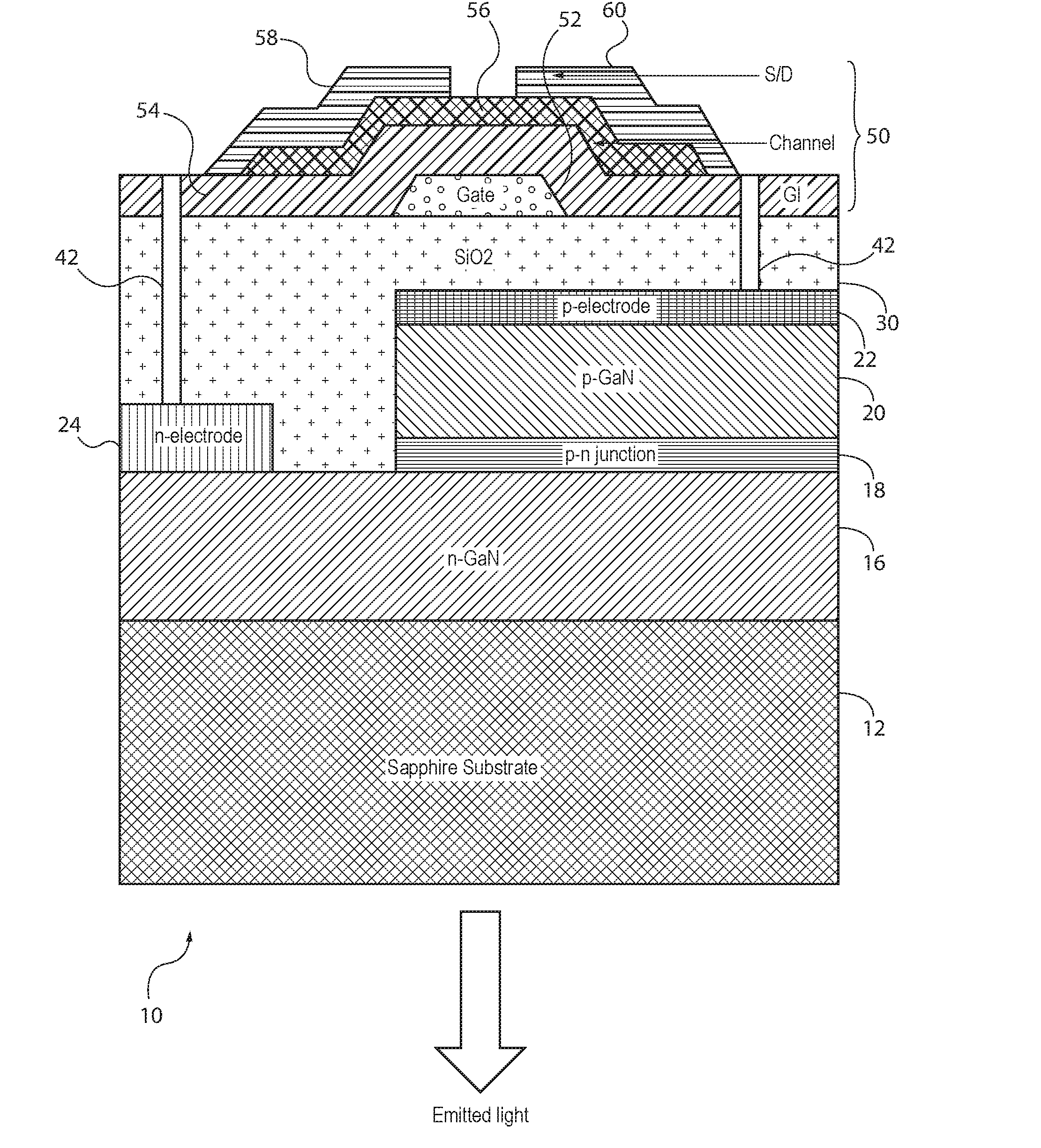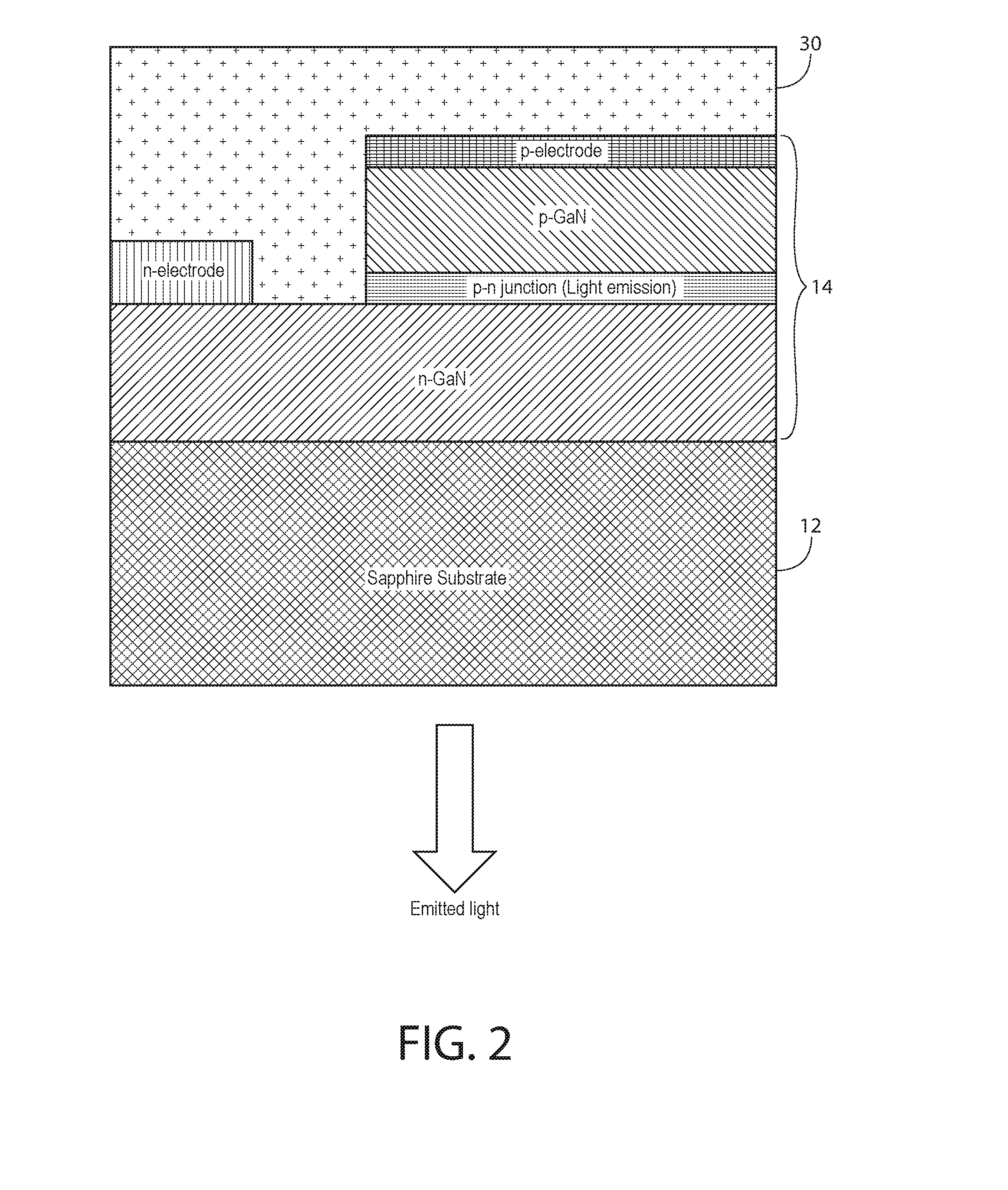Method of integrating inorganic light emitting diode with oxide thin film transistor for display applications
a technology of light emitting diodes and thin film transistors, applied in semiconductor devices, instruments, electrical devices, etc., can solve the problems of inorganic led devices that lack very high brightness, limited lifetime, and limitations in fabrication technology, and achieve high brightness, cure deficiencies, and high contrast
- Summary
- Abstract
- Description
- Claims
- Application Information
AI Technical Summary
Benefits of technology
Problems solved by technology
Method used
Image
Examples
Embodiment Construction
[0032]The present invention is directed to methods of integrating light emitting diodes (LEDs) with thin film transistors (TFTs) for display applications. In particular, the present invention utilizes III-V or II-VI group compound semiconductor materials to form LED devices. These materials require temperatures greater than 700C for processing. It should be noted that the materials and processes described herein are for illustrative purposes and the present invention is not limited to the specific LED devices or TFT configurations described.
[0033]FIGS. 1-4 illustrate the sequence of steps used in fabricating a TFT array on a LED array, having a plurality of sub-pixels, according to the present method. FIG. 1 illustrates an LED wafer 10 according to an illustrative embodiment of the present invention. The LED wafer 10 includes a stacked structure 14 composed on a transparent substrate 12. The structure 14 includes a first type semiconductive layer 16 positioned on the substrate 12, a...
PUM
 Login to View More
Login to View More Abstract
Description
Claims
Application Information
 Login to View More
Login to View More - R&D
- Intellectual Property
- Life Sciences
- Materials
- Tech Scout
- Unparalleled Data Quality
- Higher Quality Content
- 60% Fewer Hallucinations
Browse by: Latest US Patents, China's latest patents, Technical Efficacy Thesaurus, Application Domain, Technology Topic, Popular Technical Reports.
© 2025 PatSnap. All rights reserved.Legal|Privacy policy|Modern Slavery Act Transparency Statement|Sitemap|About US| Contact US: help@patsnap.com



